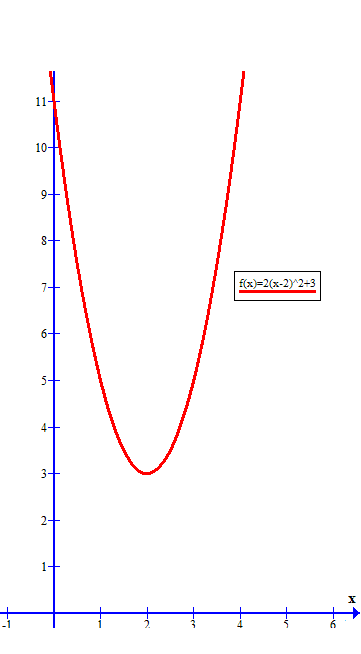How do you write a quadratic equation with vertex; ( 2,3 ); point: ( 4,11 )?
1 Answer
May 1, 2017
Explanation:
The general vertex form for a quadratic is
with vertex at
and a "spread factor" of
Given the vertex:
this becomes
We are given that one solution point is
So we have
Simplifying:
We can substitute this back into our vertex equation, to get
If your instructor prefers this in "standard form" we can expand the right side to get:
For verification purposes, here is the graph of

